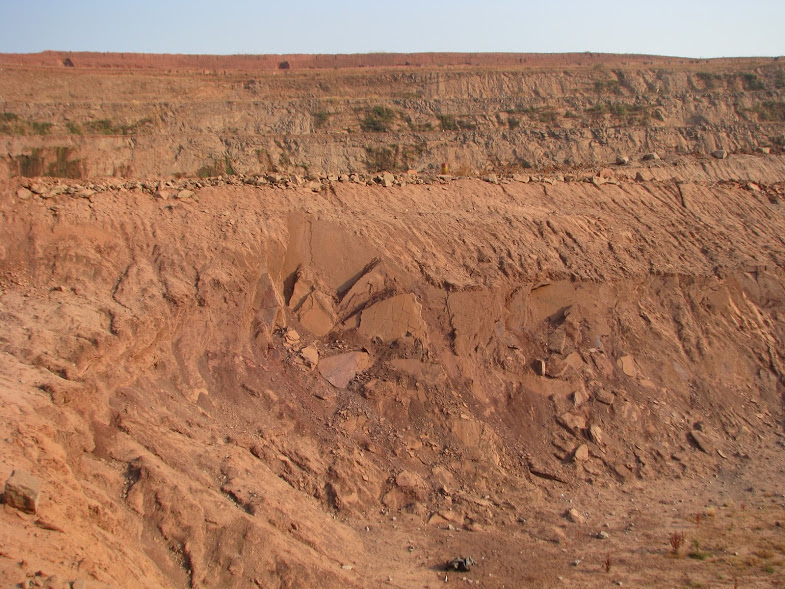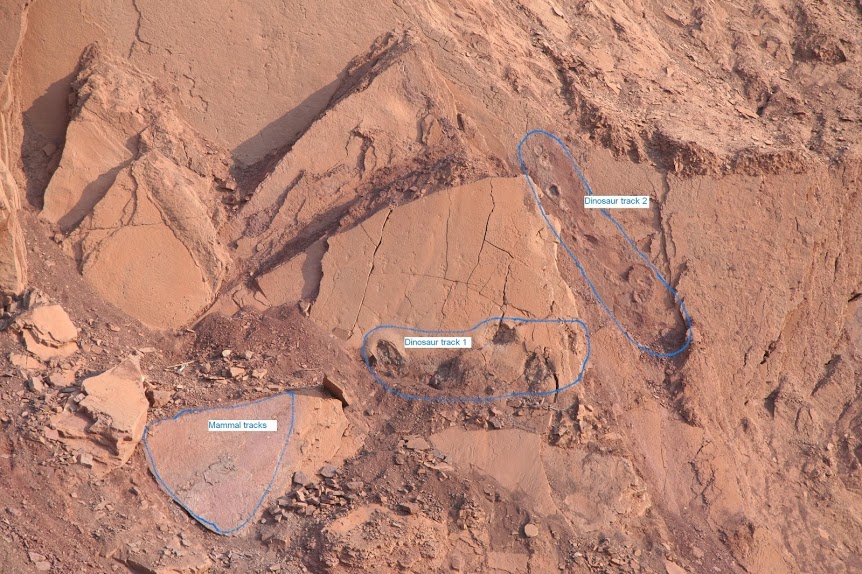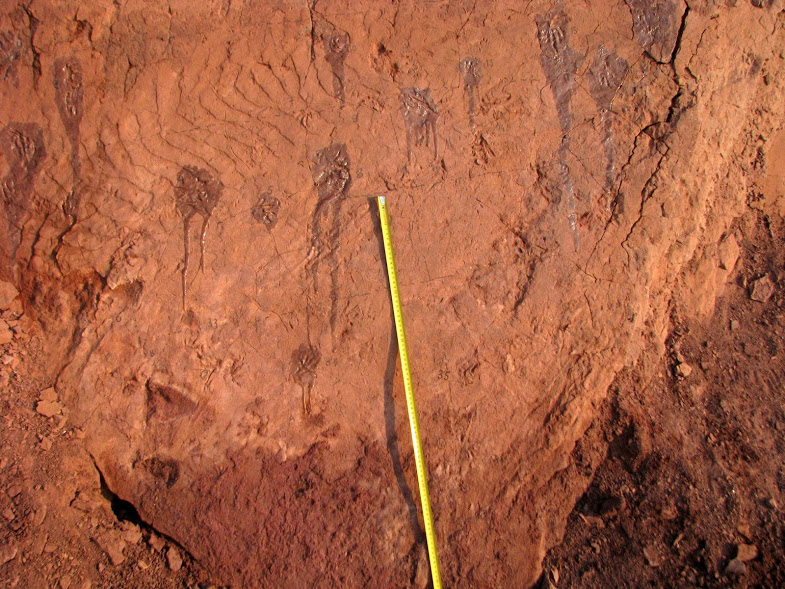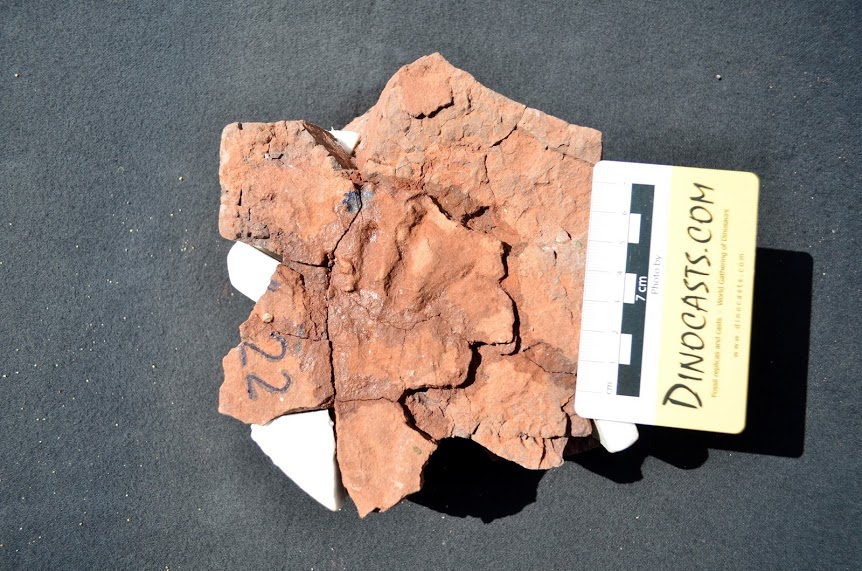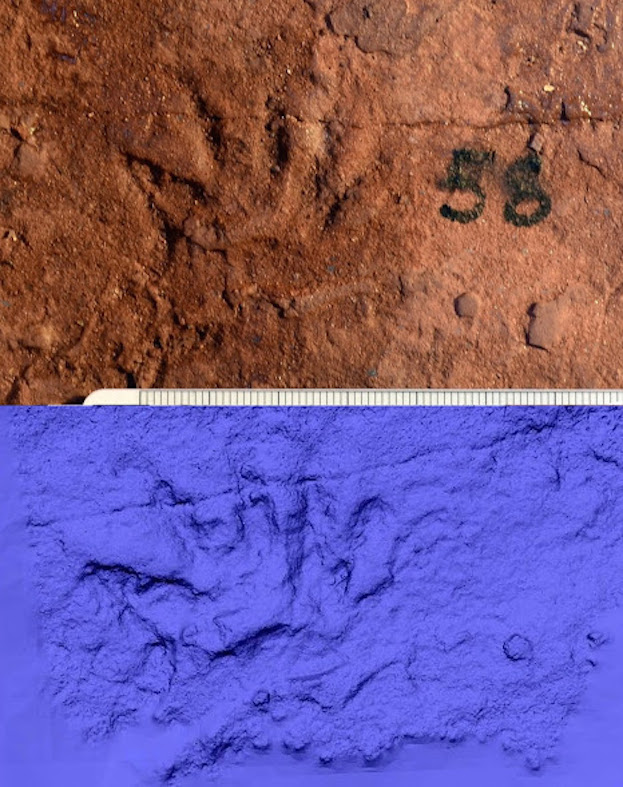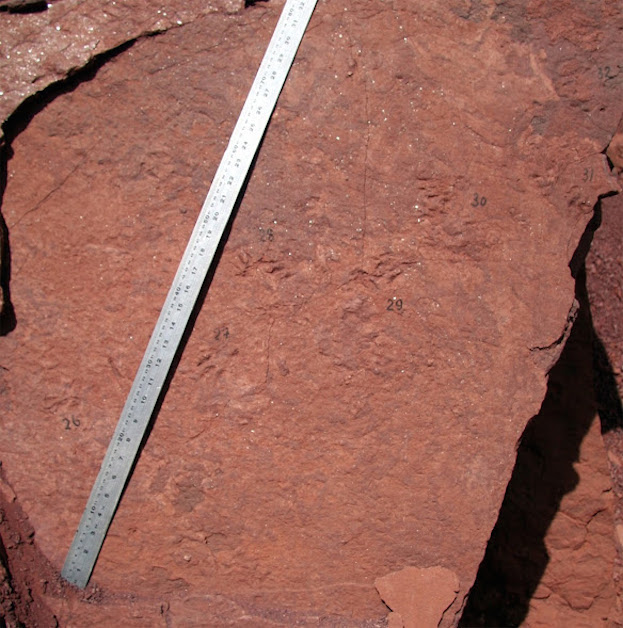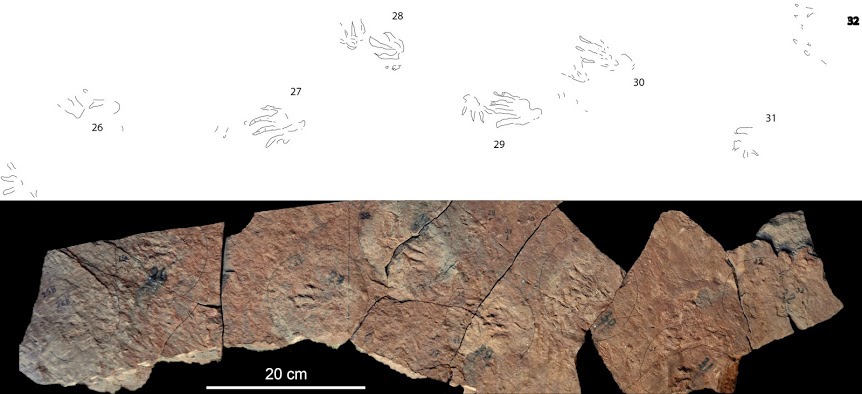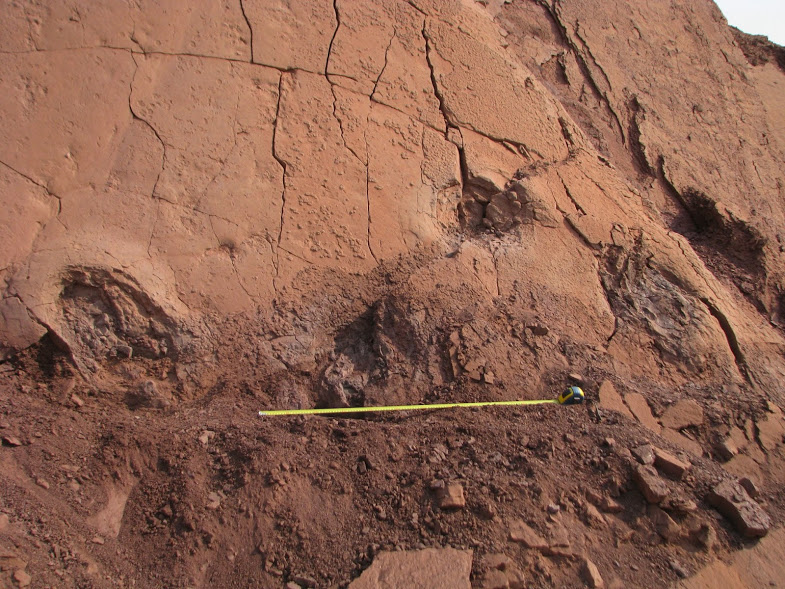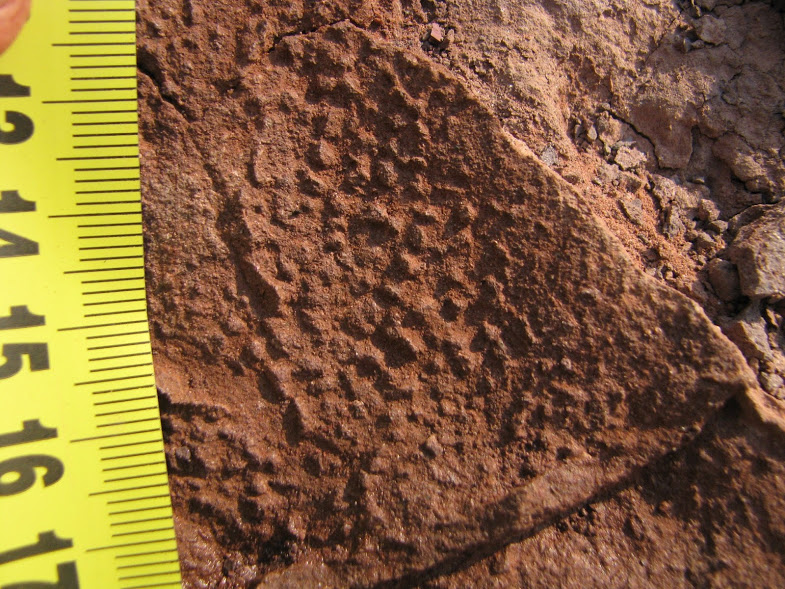Photos: Ancient Animal Footprints Found at Diamond Mine in Angola
Evidence of 118-million-year-old animal tracks suggests that the Catoca diamond mine in Angola was once a vastly different environment. It's likely that a shallow freshwater lake in the area served as the watering hole for a raccoon-size mammal — an extraordinary large mammal for that time — a crocodile and a dinosaur, according to the track marks. [Read full story on the ancient animal tracks]
Rocky outcrop
In 2010, geologist Vladimir Pervov found 118-million-year-old footprints belonging to prehistoric animals at the Catoca diamond mine in northeastern Angola, shown here. (Photo credit: Octávio Mateus.)
Track map
An overview of the locations of the mammal and sauropod track ways at the Catoca diamond mine in Angola. (Photo credit: Octávio Mateus.)
Trampled surface
The researchers found about 30 track marks from a mammal that lived during the time of the dinosaurs during the early Cretaceous 118 million years ago. It's likely that the mammal was going to drink at a shallow, nearby lake that no longer exists. (Photo credit: Octávio Mateus.)
Get the world’s most fascinating discoveries delivered straight to your inbox.
High five
The mammal has five distinctive digits, with a long middle digit and a thumb that goes off to the side. The prints, which are 1 inch by 3.7 inches (2.7 by 3.2 cm), on average, suggest that the animal was about the size of a modern-day raccoon.(Photo and drawing by Vladimir Pervov.)
Crumbling print
A crumbling track mark left by the early mammal in Catoca, Angola. Unlike this animal, most mammals that lived during the early Cretaceous were only about the size of a squirrel or a mouse. (Photo credit: Marco Marzola.)
Pretty in purple
A 3-dimensional scan of the mammalian footprint. Nowadays, researchers only have a few teeth and bone fragments from these ancient mammals, making these track marks a unique find. (Photo and 3D photogrammetry by Marco Marzola.)
Walk this way
A crocodylomorph, member of a group that encompasses both current and extinct crocodiles and their relatives, left these 118-million-year-old four-digit track marks at the Catoca diamond mine, the fourth-largest diamond mine on Earth. The mine's owners agreed to suspend activity at the sector of the mine for eight months until paleontologists could study the animal prints. (Photo credit: Octávio Mateus.)
Strolling along
A photo and a drawing of the path taken by the crocodylomorph during the early Cretaceous. (Photo by Marco Marzola, drawing by Octávio Mateus.)
Dinosaur footprints
A large dinosaur, likely a sauropod, left circular footprints measuring 20 inches (51 centimeters) across. (Photo credit: Octávio Mateus.)
Skin impression
One of the dinosaur tracks left a well-preserved skin impression. This fossil gives paleontologists a good idea about the texture of the underside of the dinosaur's foot, said Marco Marzola, a paleontologist with the PaleoAngola Project, an international group of researchers that has looked for vertebrate fossils every summer in Angola for the past 10 years. (Photo credit: Octávio Mateus.)
Follow Laura Geggel on Twitter @LauraGeggel and Google+. Follow Live Science @livescience, Facebook & Google+.

Laura is the managing editor at Live Science. She also runs the archaeology section and the Life's Little Mysteries series. Her work has appeared in The New York Times, Scholastic, Popular Science and Spectrum, a site on autism research. She has won multiple awards from the Society of Professional Journalists and the Washington Newspaper Publishers Association for her reporting at a weekly newspaper near Seattle. Laura holds a bachelor's degree in English literature and psychology from Washington University in St. Louis and a master's degree in science writing from NYU.


